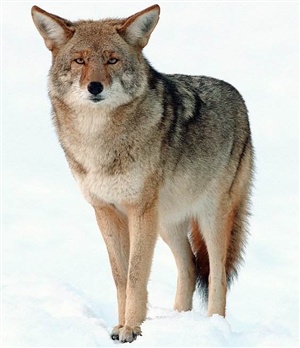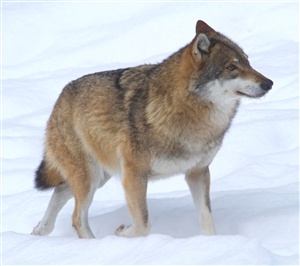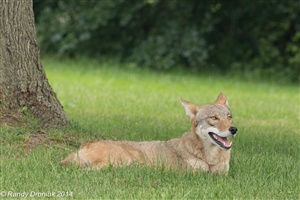Here is a list of Science Blogs ordered by Most Liked, posted by members. A Blog is a journal you may enter about your life, thoughts, interesting experiences, or lessons you've learned. Post an opinion, impart words of wisdom, or talk about something interesting in your day. Update your blog on a regular basis, or just whenever you have something to say. Creating a blog is a good way to share something of yourself with others. Reading blogs is a good way to learn more about others. Click here to post a blog.
At The Speed Of Life
I Gaze upon the Sunbeams as they pass through my window and watch all the micro-particles float and swirl, mixing and mingling, then wonder, Could this be where life began
At night i Gaze into the Cosmos Searching for unidentified movement as meteors Zip across and through Earths Atmosphere, thinking to myself, could these be the vehicles that brought life to this lucky planetary body
The building blocks of life must surely have water,carbon and energy, whether it be in a solid,liquid or gas.
In the Universe we see great Comets of Ice Emitting unknown volumes of gas vapor as they sprinkle along their journey. Could this be the Magical Mystery that delivers life like johnny Appleseed throughout the Cosmos
For every Twinkling Star in the Universe that's seen, we know that through time and space, those rays of light and energy are entering into our world, and within those Cosmic Rays most assuredly are all the Magic particles of life, Just as our Sun and its energy beams which give us light, also transports within those beams of energy, Life Itself
It must be the Answer to the Riddle
Through Time and Space, At the Speed of Light, Delivers Life and those welcoming places that nurtures it, Flourishes

Modern Inventions
Inventor of Modern Flushing Toilet........ Thomas Crapper
Can you think of anymore?
A dentist instigated the Electric Chair..but his name has no bearing.
Search for Galactic civilization 0 found
Roger Griffith, a postbaccalaureate researcher at Penn State and the lead author of the paper, scoured almost the entire catalog of the WISE satellite's detections—nearly 100 million entries—for objects consistent with galaxies emitting too much mid-infrared radiation. He then individually examined and categorized around 100,000 of the most promising galaxy images. Wright reports, "We found about 50 galaxies that have unusually high levels of mid-infrared radiation. Our follow-up studies of those galaxies may reveal if the origin of their radiation results from natural astronomical processes, or if it could indicate the presence of a highly advanced civilization."
In any case, Wright said, the team's non-detection of any obvious alien-filled galaxies is an interesting and new scientific result. "Our results mean that, out of the 100,000 galaxies that WISE could see in sufficient detail, none of them is widely populated by an alien civilization using most of the starlight in its galaxy for its own purposes. That's interesting because these galaxies are billions of years old, which should have been plenty of time for them to have been filled with alien civilizations, if they exist. Either they don't exist, or they don't yet use enough energy for us to recognize them," Wright said.
Volcanoes
Each volcano emits a unique chemical composition in its lava, and one volcano expert couldn’t understand why he had collected identical lava samples from a wide ranging area where no volcano peak or caldera was apparent. After viewing satellite photos of the area he realized the samples were from such a huge caldera that was so wide and the slope so gradual it wasn’t discernable from the ground. Other data they studied included some ancient writings that said the earth had been 30 days in cold darkness without sunlight and people were starving to death.
The scientists concluded the sequence of events causing the ice age were:
There was a period of global warming.
The ice caps melted.
Chunks of ice floated into the warm gulf stream currents.
This messed up the well balanced current flow in all the worlds oceans.
This caused the tectonic plates to shift slightly.
This resulted in increased earthquakes and volcanoes.
A large enough volcano erupted that its ash blocked the sun and cooled the earth and caused the ice age.
Does this sequence of events sound familiar??? Could Yellowstone erupt and cause the next ice age???
Fractals and Daesh
Chaos Theory predicts if there is an element of chaos, then it will spread. The growth rate can be mathematically predicted by fractal analysis.
In the 40 years since the beginning of the Lebanese Civil War we have seen many groups with elements of behavioral similarity come and go or change name. Intitially when it was just Lebanon the number was small as fractal growth would predict. There is a paradigm called the percolation threshold. As a structure changes from many disconnected parts into one, we say that percolation has occurred. There is a threshold value at which disconnected elements begin to merge together. Civilization may not be a natural structure and Chaos may much prefer anarchy.
In the 40 years one country after another has been destabilized by one outside government or another with though only to short term needs of the disrupter. Congo, Syria, Irag, Afghanistan, etc.
This has created many areas of land mass where nothing rules and the stage is set for what is called the Forest Fire Model of fractal growth. The more densely the cities are packed the more fuel to burn.
Comparing the emergence and spread of violent radical groups over 40 years in the areas destabilized very scarily gives almost identical results to running a fractal generation program in Forest Fire Mode.
The mathematical modeling of the growth of new terrorist members can be predicted using the fundamental concepts of the Brownian Motion (a predictive study for the movement of solid molecules in a liquid environment). The fractals will grow dendrites and new fractals will coerce at the end of the dendrites. Perhaps the Dendrites are analogous to social media and other communication methods? In any case once the process begins in a percolated area, very soon the screen turns black.
When a given percolated area has turned black, the production of fractals does not necessarily stop. We come to a mathematical Chaos Theory called Strange Attractor and some new things called insect fractals and animal fractals. Where they differ from normal fractals is they do not require percolated areas to appear and grow. They may grow in areas where nothing else is found, for our purposes villages without education or jobs.
Like all fractals these multiply too until the area around them is solid. They will be very similar in form to triangle and other types of fractals growing around them and dendrites may soon stretch between them.
Why I say we all messed up is when I run some of the models in simulations of the mideast, middle to North Africa, and Southern Europe, a few hours after begining, everything turns black.
You can bomb a square to try to keep it white, but the instant you stop, those little black dots begin to appear and grow. Anarchists and Chaos Theory love each other.
The only solutions for a change of outcome I see is to reinstall governments and robust infrastructure in the areas previously intentionally destabilized. Yes, who bells the cat?
Still the concept is to block the black fractals by already having nice stable, blue or green or yellow fractals of our own there already. Yes, the black will try to circle and smother, but our own fractals will be doing the same. The secret is to recognize the problem and plant blue and yellow beacons of hope where there today is only white space.

Withdrawing from Reality
The idea that people might choose to ignore the actual world and withdraw into virtual reality began to concern writers and thinkers long before VR technology actually developed. In Summa Technologiae , a book of essays about the future published in 1964, Polish science-fiction writer Stanislaw Lem described an imaginary machine that he called a Phantomat. According to an essay by author John Gray, Lem pictured the dangers of permanent immersion in the Phantomat's virtual reality this way:
The more realistic the virtual world the machine creates, the more imprisoned we are in our imaginations. As our embodied selves, we interact with a world we know only in part, and which operates independently of our desire. In contrast, the virtual worlds we encounter in the Phantomat are human constructions. Fabricated from our dreams, they are worlds in which nothing can be hurt or destroyed because nothing really exists. In short, they are worlds in which nothing really matters.
Richard DeGrandpre, like Lem, believes that once people become used to virtual worlds, the real world will no longer satisfy them, and they will withdraw from it. This will happen, he thinks, not only because virtual reality will be so appealing, but because social, environmental, and other problems will have made the real world just the opposite. "The ultimate reason we're apt to be taking flight from material reality," he writes, "is to escape the expanding unpleasantness of our inner and outer lives—a melange of boredom, restlessness, . . . anxiety, and depression."
Read more:
woke one night from a peculiar dream, disturbed . . . by . . . the way the scenes had changed; they had not unfolded in a horizontal flow, the movie-like montage of a typical dream presentation, but had scrolled past, rolling up vertically from bottom to top. And my focus had shifted, too, as if the inner observer were no longer located behind my eyes, but had been projected 24 inches forward, out of my body, a displacement roughly equal to the distance between my desk chair and the computer monitor. The conclusion was inescapable. I had become a mouse. Not even a mouse. A mouse indicator. A curso
Read more:

Did you Know.....
I wonder if this explains "past life" memories that some people have?
Humans have created a new top predator
Humans are not newcomers when it comes to messing around with nature. While we haven't created Frankenstein's monster yet, what we do transforms the natural world.
One recent example is the creation of the coywolf — a hybrid of the coyote and the wolf that is also known as the Eastern coyote. According to a new article from The Economist, their population seems to have reached more than a million.
These animals have a completely new genetic makeup: Their genes are about one-quarter wolf DNA and two-thirds coyote DNA; the rest is from domesticated dogs. A 2013 study suggests this dog DNA is mostly from a few specific breeds, including German Shepherds and Doberman Pincers.
Human activity likely played a role in the species' creation. As humans cut down wolves' forest homes and hunted down their populations, the lack of available partners for wolves led them to search elsewhere for mates, leading them to coyotes and dogs.
Scientists think this intermixing began with wild wolves in southern Ontario about a century or two ago.
The coywolves' success is astounding scientists. According to The Economist:
The animal’s range has encompassed America’s entire north-east, urban areas included, for at least a decade, and is continuing to expand in the south-east following coywolves’ arrival there half a century ago. This is astonishing. Purebred coyotes never managed to establish themselves east of the prairies. Wolves were killed off in eastern forests long ago. But by combining their DNA, the two have given rise to an animal that is able to spread into a vast and otherwise uninhabitable territory.
Here's the coyote, which traditionally maxes out at 75 pounds and has pointier features, and readily populates cities:
And this is what a wolf looks like. Wolves are usually bigger, weighing in at about 100 pounds, and prefer more wild habitats.
While the grey wolf and the coyote are each other's closest living relatives, the two animals separated evolutionarily 1 to 2 million years ago.
Usually hybrids — even between two closely related species — don't survive as well as their parent species, but the coywolves seem to be an exception. They've only really emerged in force during the last few decades, but they seem to have a few advantages over their parent species.
According to The New York Times' Moises Velazquez-Manoff: "[The coywolf] can be as much as 40 percent larger than the Western coyote, with powerful wolf-like jaws; it has also inherited the wolf's more social nature, which allows for pack hunting."
According to The Economist: "With larger jaws, more muscle and faster legs, individual coywolves can take down small deer. A pack of them can even kill a moose."
These animals are even better fitted to our changing world than we thought, and their proliferation has been more "rapid, pervasive, and transformational than once thought," according to The Economist. The genetic combination of the two animals seems especially well suited to the northern habitat. The wolf genes allow the coyote to take down bigger prey, while the coyote genes let them adapt to cities and other populated areas.
The wolves even follow railroads into cities, making themselves scarce during the day — adopting a nocturnal schedule. They even look both ways before crossing the highway.
Randy Droniuk caught this coywolf lounging in Oakville, Ontario, Canada.
Another reason the animals are so successful could be their wider diet, according to The Economist:
Nature !
A Blog is a journal you may enter about your life, your thoughts, interesting experiences, or lessons you have learned. It's your own page on Connecting Singles that you can update on a regular basis, or just whenever you have something to say. You can write about an opinion, impart words of wisdom, or talk about something interesting in your day. Creating a blog is a good way to share something of yourself with Connecting Singles members. Reading blogs is a good way to learn more about members you have met here. Please be sure to read the blog rules before posting.
Would YOU like to post a blog on Connecting Singles? Have you written blogs that you'd like to share with other members? Posting your blogs shows your skill and creativity and helps members get to know you better. Your blog will appear on the Connecting Singles Blogs page and also in a link on your profile page. Click here to post a blog »



